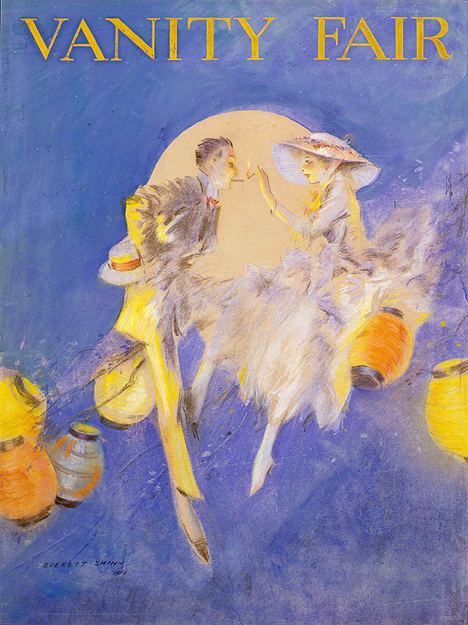 | ||
Vanity Fair has been the title of at least five magazines, including an 1859–63 American publication, an 1868–1914 British publication, an unrelated 1902–04 New York magazine, and a 1913–36 American publication edited by Condé Nast, which was revived in 1983.
Contents
- Vanity Fair 185963 American
- Vanity Fair 18681914 British
- Vanity Fair 190204 American
- Vanity Fair 191336 American
- Vanity Fair 1983present American
- References
Vanity Fair was notably a fictitious place ruled by Beelzebub, in the book Pilgrim's Progress by John Bunyan. Later use of the name was influenced by the well-known 1847–48 novel of the same name by William Makepeace Thackeray.
Vanity Fair (1859–63), American
The first magazine bearing the name Vanity Fair appeared in New York as a humorous weekly, from 1859 to 1863. The magazine was financed by Frank J. Thompson, and was edited by William Allen Stephens and Henry Louis Stephens. The magazine's stature may be indicated by its contributors, which included Thomas Bailey Aldrich, William Dean Howells, Fitz-James O'Brien and Charles Farrar Browne.
Vanity Fair (1868–1914), British
The second Vanity Fair was a British weekly magazine published from 1868 to 1914.
Subtitled "A Weekly Show of Political, Social and Literary Wares", it was founded by Thomas Gibson Bowles, who aimed to expose the contemporary vanities of Victorian society. The first issue appeared in London on November 7, 1868. It offered its readership articles on fashion, current events, the theatre, books, social events and the latest scandals, together with serial fiction, word games and other trivia.
Bowles wrote much of the magazine himself under various pseudonyms such as "Jehu Junior", but contributors included Lewis Carroll, Willie Wilde, P. G. Wodehouse, Jessie Pope and Bertram Fletcher Robinson (editor: June 1904 – October 1906).
A full-page, color lithograph of a contemporary celebrity or dignitary appeared in most issues, and it is for these caricatures that Vanity Fair is best known today. Subjects included artists, athletes, royalty, statesmen, scientists, authors, actors, soldiers, religious personalities, business people and scholars. More than two thousand of these images appeared, and they are considered the chief cultural legacy of the magazine, forming a pictorial record of the period.
The final issue of the British Vanity Fair appeared on February 5, 1914.
Vanity Fair (1902–04), American
Vanity Fair was a weekly magazine published by The Commonwealth Publishing Company of 110 West 42nd Street, New York City. The Commonwealth Publishing Company was incorporated in February 1902, and went into bankruptcy in April 1904.
"Number 785 becomes “The Standard and Vanity Fair”, published by William H, McCarthy and edited by David H. Dodge
Vanity Fair (1913–36), American
An American Vanity Fair was edited by Condé Montrose Nast 1913–1936, when it was merged into Vogue. It was revived in 1983 by Condé Nast Publications.
Vanity Fair (1983–present), American
The current Vanity Fair is an American monthly magazine of pop culture, fashion, and politics published by Condé Nast Publications.
